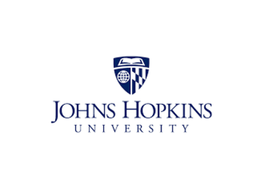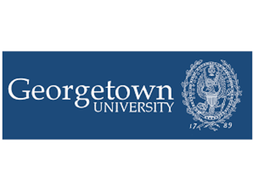8 Astrophysics Competitions You Should Check Out as a High Schooler
If you’re interested in the field of astrophysics, there is a range of enriching opportunities that can take your knowledge beyond the classroom and competitions are one of them. Astrophysics and astronomy competitions not only arm you with a higher level of knowledge but can also fuel scientific curiosity and innovation.
Apart from the theoretical and practical learning, you might also want to consider participating due to the academic benefit. Competitions showcase your passion for a field of study and colleges tend to recognize it as evidence of your commitment. It’s a great way to prove your problem-solving abilities and give your college applications an overall boost.
In order to help you get there, here are 8 noteworthy astronomy and astrophysics competitions for high school students:
Registration deadline: Registrations generally open 6 months before the event
Eligibility: High school students who are not graduating by January 1 of the year of the competition and will be below the age of 20 by July 1 of the year of the competition
Prize: Prizes can be in the form of medals, certificates or awards, determined at the discretion of the organizer
Program dates: August (tentatively, based on previous years)
Location: TBA
Fee: No participation fee but students might have to cover travel costs to the host city
Held in a different host country each year, the IOAA is a prestigious international competition in astronomy and astrophysics. The competition has a theoretical section and a practical section. The theoretical section will test you on a number of different areas like cosmology, space technologies, coordinates and times, and solar and stellar systems. The practical section covers observations and data analysis and could involve the use of astronomical instruments or software.
You will take part in groups with a professional astronomer/teacher as a team leader. Do keep in mind that since this competition takes place on a global level, students must participate through their country’s national Olympiad committee. A basic understanding of the subject would be required for this program, you can go through previous papers here.
Application deadline: April 26, 2024
Eligibility: All high school and university students can apply (there is a Junior category for those under 18 and a Youth category for those over 18)
Prize: Up to $150 in cash as well as special awards for select participants
Program dates: Submission deadlines are as follows. Qualification round: April 26, 2024, Pre-final round: June 2, 2024, Final round exam: June 25, 2024
Location: Online
Fee: €8 for the pre-final round (the qualification round is free to take part in)
The IAAC is a highly regarded competition in the field and you can participate from the comfort of your home. It’s an international-level online competition with three levels: a qualification level where you will develop solutions for five astronomy problems, a pre-final round where you will solve six problems, and the final round which consists of a multiple-choice exam. In each round, you need to earn a certain number of points to qualify for the next level.
The problems can range from knowledge-based questions to astrophysical calculations. Two of those from the pre-final round are research problems which will require you to read scientific papers to be able to answer the questions. On the whole, you do need a basic understanding of the subject to participate, and looking through past competitions and their solutions will help you get there.
Registration deadline: April (tentatively, based on previous years)
Eligibility: Students from grades 5 to 12 across the world (there are three categories based on age: Junior, Senior, and Super Senior)
Prize: A free trip to NASA!
Program dates: Preliminary exam in May, Intermediate exam in August, Final exam in November
Location: Online
Fee: INR 500 for the preliminary exam, the other two exams require separate payment but further details are unavailable
The International Space Olympiad seeks to encourage students to explore the field of space science and astrophysics. The competition has 3 levels of online exams and the syllabus covers space science, space technology and history of space explorations. The organization hosting this program, Edu Mithra Intellectual Services, releases e-books based on the syllabus and offers online training before each exam. You must pass each exam to qualify for the next. Ultimately, the biggest takeaway from this contest is the opportunity to win a free trip to NASA.
Submission deadline: February 15
Eligibility: All students up to the 12th grade (international students can apply)
Prize: Cash prizes and certificates. The top student’s submission will be hosted on the contest website. The student will also attend the NSS’s International Space Development Conference and receive the Herman Rubin Memorial Scholarship of $5,000.
Program dates: All submissions must be made by February 15, 2024
Location: Online
Fee: $15 entry fee which can be waived in certain cases
The NSS Gerard K. O'Neill Space Settlement Contest is an annual contest organized by the National Space Society (NSS). The contest has a more specific focus than other entries on this list as it challenges students to design space settlements and come up with practical ideas for human habitation beyond Earth. As a participant, you will end up looking at a number of different areas to complete the assignment like engineering, agriculture, economics, and social factors. Here is a list of resources that can help aid your process. You can participate as an individual or as a team and entries are grouped by age as well.
Registration deadline: Early September
Eligibility: Students ages 14 – 18 years old
Prize: Students receive diplomas depending on their rank
Program dates: November 6, 2023 – November 14, 2023
Location: Beijing, China
Fee: Approximately €445 per team, although this can vary with the host city/country
Now in its 27th year, this competition is an annual event organized by the Euro-Asian Astronomical Society. The selected participants are generally those who have won their country’s National Astronomy Olympiad, so this contest requires a higher level of knowledge. It is an in-person event that takes place in a different part of the world every year and involves 3 rounds — theoretical, observational, and practical.
Since this is also a large-scale competition, you must take part through an official astronomy organization in your country. Each country sends a team of about 3-5 participants along with 1-2 team leaders (professionals). A highlight of this program is its global nature, providing students with the opportunity to interact with peers and professionals from various countries and make lasting connections.
Registration deadline: Registration opens on November 6, 2023
Eligibility: Students age 19 or younger can form teams of 2-6 people
Prize: Previous winners have been given the opportunity to attend a live Q&A session with an astronaut
Program dates: November to February
Location: Online
Fee: Free
If you’re interested in computer programming, then consider this competition which explores the applications of programming in space. In teams, you will write a Python program that solves a specific scientific task and the program is then run on the International Space Station. While the tasks vary with each year, the 2023-24 edition has tasked students with writing a program to use the Astro Pi computers on board the ISS to gather data and then calculate the speed of the ISS.
The contest has different phases for submitting ideas, writing the program and deploying it on the ISS. At each stage, select teams pass to the next level. Last year, over 700 teams registered, and 10 teams were declared the winners, so this can be a fairly difficult competition. Not only will you learn about the ISS’s operation but also get hands-on experience with analyzing data and troubleshooting a computer program.
Eligibility: All high school students (even international students can apply)
Prize: Cash prizes with the top winner receiving $75,000. Additional prizes could include scholarships, internship opportunities, lab equipment and more
Program dates: Regional/local fairs usually conclude by April, ISEF takes place over one week in the month of May
Location: Los Angeles (location varies by year)
Fee: Ideally, any costs will be covered by the fair/organization through which you get accepted to the ISEF
Unlike the other competitions on this list, the ISEF judges students’ work on a research project. You can work in teams or individually and your area of research must fall under the competition’s categories, one of which is astronomy and cosmology. The focus of this program is on doing in-depth research and you will be judged on the basis of your scientific inquiry, execution and presentation (virtual and physical).
One thing you need to consider is that you need to first participate in a regional/local fair in order to get shortlisted for ISEF. It can seem like an arduous process, but the prestige of the competition is worth taking the trouble. Another similar program you can look at is the Regeneron Science Talent Search.
Application deadline: January 10, 2024
Eligibility: All high school students, even international ones, can form teams of 2-4 people. All team members must be from the same school
Program dates: February 3, 2024 – February 4, 2023
Location: North Carolina State University, Raleigh, NC
Fee: $1000 per team (this covers registration, membership fees, three nights’ hotel stay, meals, and local transport. International travel is not included in this)
Hosted by the United States Association for Young Physicists Tournaments, a non-profit organization, the USIYPT is a physics research/debate tournament. In teams of four, you will develop solutions to four problems and then take part in ‘physics fights’ — debate-style events where you showcase your solution against an opposing team. While this contest looks at all the different areas within physics, the provided problems have been known to fall under astronomy. Previous tournaments have included tasks like making a three-dimensional map of the moon’s surface, measuring the length of one Astronomical Unit, and investigating the physics of non-water rainbows.
If you’re looking for the opportunity to do in-depth research in astrophysics and astronomy, you could also consider applying to one of the Lumiere Research Scholar Programs, selective online high school programs for students I founded with researchers at Harvard and Oxford. Last year, we had over 4000 students apply for 500 spots in the program! You can find the application form here.
Stephen is one of the founders of Lumiere and a Harvard College graduate. He founded Lumiere as a PhD student at Harvard Business School. Lumiere is a selective research program where students work 1-1 with a research mentor to develop an independent research paper.
Image Source: IOAA logo










